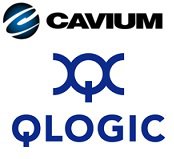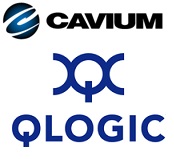
June 16, 2016
By: Michael Feldman
Chipmaker Cavium is plopping down a cool billion, and then some, to acquire QLogic, a networking and storage specialist. With the deal, Cavium is hoping to expand its footprint in the datacenter and fill in certain holes in its portfolio.
"The acquisition adds QLogic’s Fibre Channel and Ethernet controllers and boards to Cavium’s line up of communications, security and general-purpose processors, positioning Cavium as more of a full-line supplier to datacenters. The deal also gives Cavium a mature software stack in storage and networking and operational savings expected to amount to $45 million a year by the end of 2017."
 Such a move sets up Cavium to be a bigger player in the datacenter space, where it hopes to derive synergies from the relatively complementary product sets. To some extent this mirrors Intel’s acquisition strategy over the past few years when it bought up an array of networking technology from various companies, namely Fulcrum Microsystems in 2011 (Ethernet switch ASICs), Cray (Aries interconnect), and QLogic itself (InfiniBand product line). The latter two acquisitions became the basis for Intel’s Omni-Path fabric technology, some of which is being folded into the Xeon and Xeon Phi product lines.
Such a move sets up Cavium to be a bigger player in the datacenter space, where it hopes to derive synergies from the relatively complementary product sets. To some extent this mirrors Intel’s acquisition strategy over the past few years when it bought up an array of networking technology from various companies, namely Fulcrum Microsystems in 2011 (Ethernet switch ASICs), Cray (Aries interconnect), and QLogic itself (InfiniBand product line). The latter two acquisitions became the basis for Intel’s Omni-Path fabric technology, some of which is being folded into the Xeon and Xeon Phi product lines.
Whether Cavium intends to parlay QLogic's IP into high performance datacenter products remains to be seen, but it does open up some interesting options for them. Cavium already has a diverse set networking and other communication-centered semiconductor products in-house, but generally lacks QLogic's deep software stack to wrap around them. The company’s ThunderX ARM server processor, as well, might be helped along with some of QLogic’s RDMA Ethernet technology, given that they’ve collaborated in this area before.
Upon hearing the news, the markets punished Cavium's stock on concerns that the acquisition would add risk to the execution of upcoming product ramps and would lower growth rates and margins.
